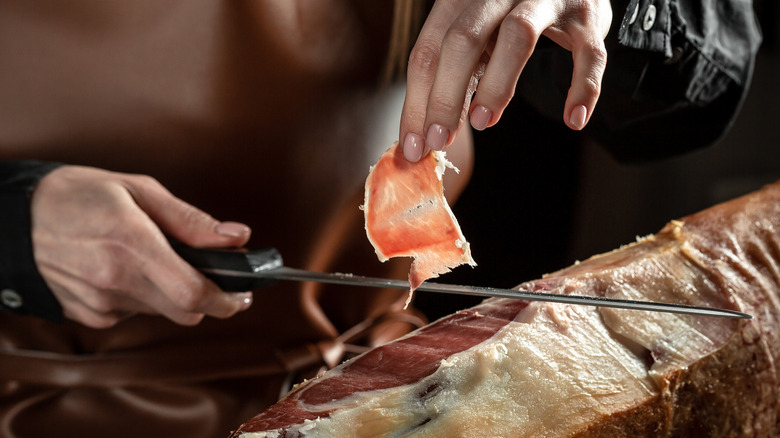Why You Should Stop Storing Cured Meats In The Pantry
While some may be die-hard cured meat fans, most have tasted or at least heard of cured meats. Prosciutto, salami, jamón imbérico – the list of delicious cured meats goes on. Whether using them to take your charcuterie board to the next level, crisping some up to add to pasta, or simply eating it plain, cured meats have a way of finding their way into our diets (if you're a meat eater, of course). Without understanding exactly what cured meats are, how can we know how to store them?
According to Eat Cured Meat, the term "cured meats" is very broad but generally refers to using salt to reduce the production of unwanted bacteria or flavor. While meat can be dry or wet cured, salt is always the main ingredient. While some cured meat is then cooked, others are left to dry out and are no longer considered to be raw. Given that the addition of salt was initially used to preserve meat, one would believe it should have a long shelf life and can be left in the pantry. Unfortunately, this isn't true, but why?
The refrigerator is always best
While they may be less susceptible to bacteria once cured, according to The National Center For Home Food Preservation, the curing process itself should happen at a temperature between 35 to 40 F. This helps to limit microbial growth, so any cured meat purchased from a butcher or supermarket should also be held in the refrigerator instead of the pantry with the ideal temperature being below 45 F. In addition, they should be stored far away from cheeses and kept away from light, if possible (via Carnivore Club).
By curing meat with salt, the moisture in the meat is retained. According to the Carnivore Club, sliced and refrigerated cured meats start to lose their moisture. This will lead to less flavor and, over time, make them inedible. As cured meats cannot be frozen — which affects their tenderness and flavor — they should be wrapped tightly in plastic wrap and stored in the refrigerator.
To understand shelf-life, the cut cured meat's thickness must also be considered. For example, thin prosciutto shouldn't be eaten after three days, while sliced hard salami can be refrigerated for up to two weeks. When storing cured meat, be sure to wrap it tightly to avoid any air pockets.

